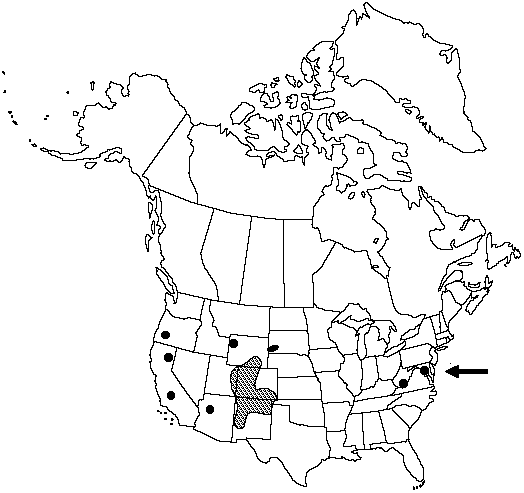Asplenium septentrionale
Deutschl. Fl. 2: 12. 1796.
Roots not proliferous. Stems erect, much branched to produce dense many-stemmed tufts or mats bearing numerous crowded leaves; scales dark reddish-brown to black throughout, narrowly deltate, 2–4 × 0.3–0.6 mm, margins entire. Leaves monomorphic. Petiole dark reddish-brown proximally, fading to green distally, 2–13 cm, 2–5 times length of blade; indument absent. Blade linear, simple or more often 1-pinnate, 0.5–4 × 0.1–0.4 cm, occasionally wider when pinnae strongly diverge, leathery, glabrous; base acute; apex acute, not rooting at tip. Rachis green, lustrous, glabrous. Pinnae of pinnate leaves 2 (–4), strongly ascending to give forked appearance, linear, (5–) 10–30 × 0.75–3 mm; base acute; margins remotely lacerate; apex acute. Veins free, obscure. Sori usually 2+ per pinna, parallel to margins. Spores 64 per sporangium. 2n = 144.
Habitat: Cliffs of various substrates
Elevation: 700–2900 m
Distribution

Ariz., Calif., Colo., D.C., N.Mex., Okla., Oreg., S.Dak., Tex., Utah, W.Va., Wyo., Mexico in Baja California, Europe, Asia
Discussion
In North America Asplenium septentrionale is principally a western species with isolated disjunct populations in Monroe and Hardy counties, West Virginia. Because of its close resemblance to a tuft of grass, it is easily overlooked, and discoveries of additional localities are to be expected. In Europe A. septentrionale is known to hybridize with several species, but in North America only the hybrid with A. trichomanes (A. × alternifolium Wulfen) is known.
Selected References
None.
Lower Taxa
No values specified."-5timeslengthofblade" is not declared as a valid unit of measurement for this property.